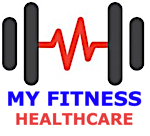A recent collaboration between Physiopedia and the University of Arkansas physical therapy (PT) students creates new Physiopedia resources for rehabilitation professionals worldwide through the Content Development Programme.
It’s incredible what can be achieved when passionate minds come together for a shared purpose. Physiopedia Content Development Programmes aim to do just that – they are an opportunity for students and healthcare professionals from education institutions, clinics and professional organisations to get involved in creating high quality content for the global rehabilitation community. Recently, a team of dedicated PT students from the University of Arkansas embarked on a collaborative content development project focused on topics such as Classification of Peripheral Nerve Injury, Snapping Scapula Syndrome, Thomas Test, Hippotherapy, and many more. Each topic was chosen based on its relevance to their recent studies and any gaps the team noted in Physiopedia content. Their mission was clear – to channel their budding expertise into creating and reviewing content that’s both valuable and relevant for rehabilitation professionals worldwide.
“It was great to have the opportunity to be involved in something that other people will get to see and be a part of!” shared one of the students from the University of Arkansas.
For many students, this project was more than just an academic exercise. It was an opportunity to explore, research, and share insights on conditions like polycystic ovary syndrome to ensure topics like women’s health are well represented in Physiopedia learning resources. It also allowed students to bridge the gap between theory and real-world practice, as well as an opportunity to make a meaningful difference to the global rehabilitation community through their contributions. As they entered the unfamiliar world of webpage editing, guided by Physiopedia editing tutorials, they were able to add to the growing library of knowledge that will benefit medical and rehabilitation professionals as well as patients.
Another student told us “I enjoyed being able to edit a webpage and becoming an editor. This is something that I never imagined myself doing while in PT school.”
Their contributions were diverse and included creating pages on completely new topics such as the hypermobile meniscus, while others reviewed existing pages such as the Thomas Test, updating information and adding videos and images. They worked in teams to provide up-to-date information in line with the latest evidence and best practices.
“I like the thought that the research and contribution will help future patients and clinicians to treat and understand PCOS on a better level.”
As we mark the successful completion of this project, we must say a big thank you to each student for their effort and enthusiasm. Their dedication to advancing global rehabilitation knowledge resonates deeply with Physiopedia’s ethos. It’s collaborations like these that continually inspire us. By fostering such partnerships and harnessing the power of collective knowledge, we move closer to our vision – a world where every rehabilitation professional has access to the knowledge they need to improve patient care.
Feeling inspired by this collaboration and keen to explore further? Visit Physiopedia and discover the wealth of knowledge shared by our global community. Our projects are not just for students; any organisation, clinic, or rehabilitation professional can be a part of the journey. Whether you are a physiotherapist, occupational therapist or any other allied health professional – every voice counts, and we want you to be heard. Join our mission, contribute, engage, and together let us elevate the standards of worldwide rehabilitation care.

